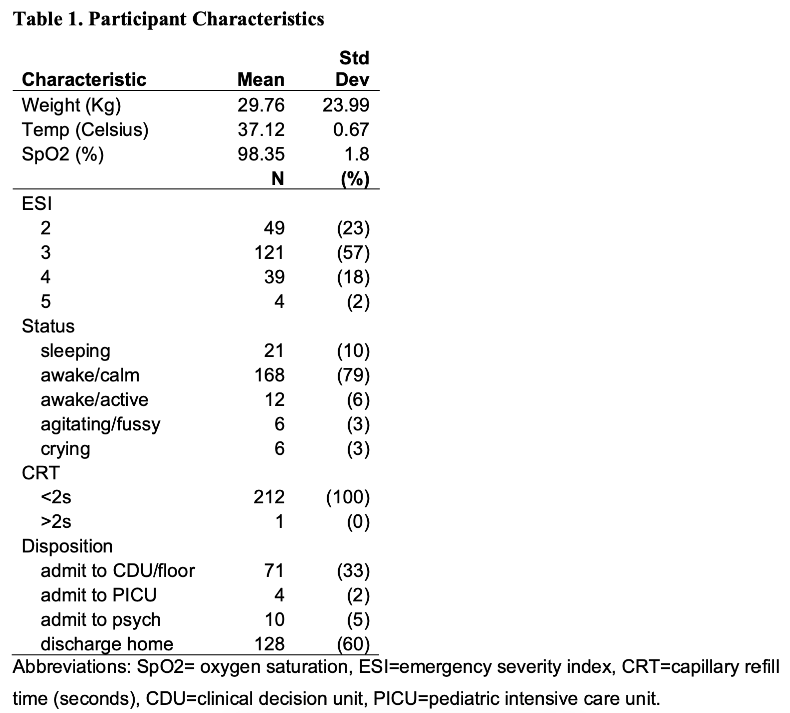Emergency Medicine
Session: Emergency Medicine 11: Potpourri
420 - Can Caregivers Reliably Assess Their Child’s Heart Rate and Respiratory Rate Using Smartphone or Smartwatch Applications?
Monday, May 6, 2024
9:30 AM - 11:30 AM ET
Poster Number: 420
Publication Number: 420.2797
Publication Number: 420.2797

Jonathan A. Silverman, MD, MPH (he/him/his)
Associate Professor of Emergency Medicine
Children's Hospital of Richmond at VCU
Richmond, Virginia, United States
Presenting Author(s)
Background: Assessment of heart rate (HR) and respiratory rate (RR) are critical to evaluating acuity and risk in sick children. The development of smartphone and smartwatch apps have the potential to empower caregivers to more accurately and quickly assess their child’s vital signs. Home monitoring can improve the quality of telephone triage or virtual visits, determine which patients require evaluation in the emergency department (ED) and reduce unnecessary healthcare utilization.
Objective: We sought to compare HR and RR measured by caregivers with smartphone and smartwatch apps to simultaneous measurements by nurses in the ED.
Design/Methods: Patients were prospectively recruited from a ED at an academic children’s hospital between January 5-June 30, 2023. HR and RR were measured by parents and nurses simultaneously. Nurses used pulse oximeter or cardio-respiratory monitor for assessment of HR and visual assessment for RR during routine care. Parents measured HR on an iPhone SE (iOS version 16.1.2) with the Cardiio: Heart Rate Monitor smartphone app (Version 4.0.13) and an Apple Watch Series 8 (GPS Alum 41 mm) Heart Rate app. They measured RR with the RRate app (Version 2.4, University of British Columbia). Reproducibility was assessed using Bland-Altman analyses and summarized using Kappa agreement. We surveyed parents on their general level of comfort with smartphone apps before use and then asked about their comfort level with these specific vital sign apps afterward.
Results: We recruited 213 patients ages 1 month to 18 years (average=6.8 years) (Table 1). For measurement of RR, no bias was evident, but the limits of agreement (LOA) were wide (between –23 and +24 breaths/minute). For HR measurement by smartphone, caregivers reported consistently lower values than nurses (bias=–22 beats/minute), and LOA was wide (–32 to +75 beats/minute), but with improved performance in older children. On the other hand, HR measurement by smartwatch showed no evidence of bias and the LOA were acceptable (–5 to +5 beats/minute) (Figure 1). Caregivers felt that the smartwatch app was the easiest to use (Table 2).
Conclusion(s): When compared with nurse assessed vital signs, our study showed poor performance for caregiver measured vital signs in smartphone apps in children presenting to the ED. However, the smartwatch did reliably assess HR, and parents rated it most highly. It has the potential to be a useful tool for caregivers in triaging their own children at home. Next steps include testing the performance of these devices in the home setting.

.png)
.png)
